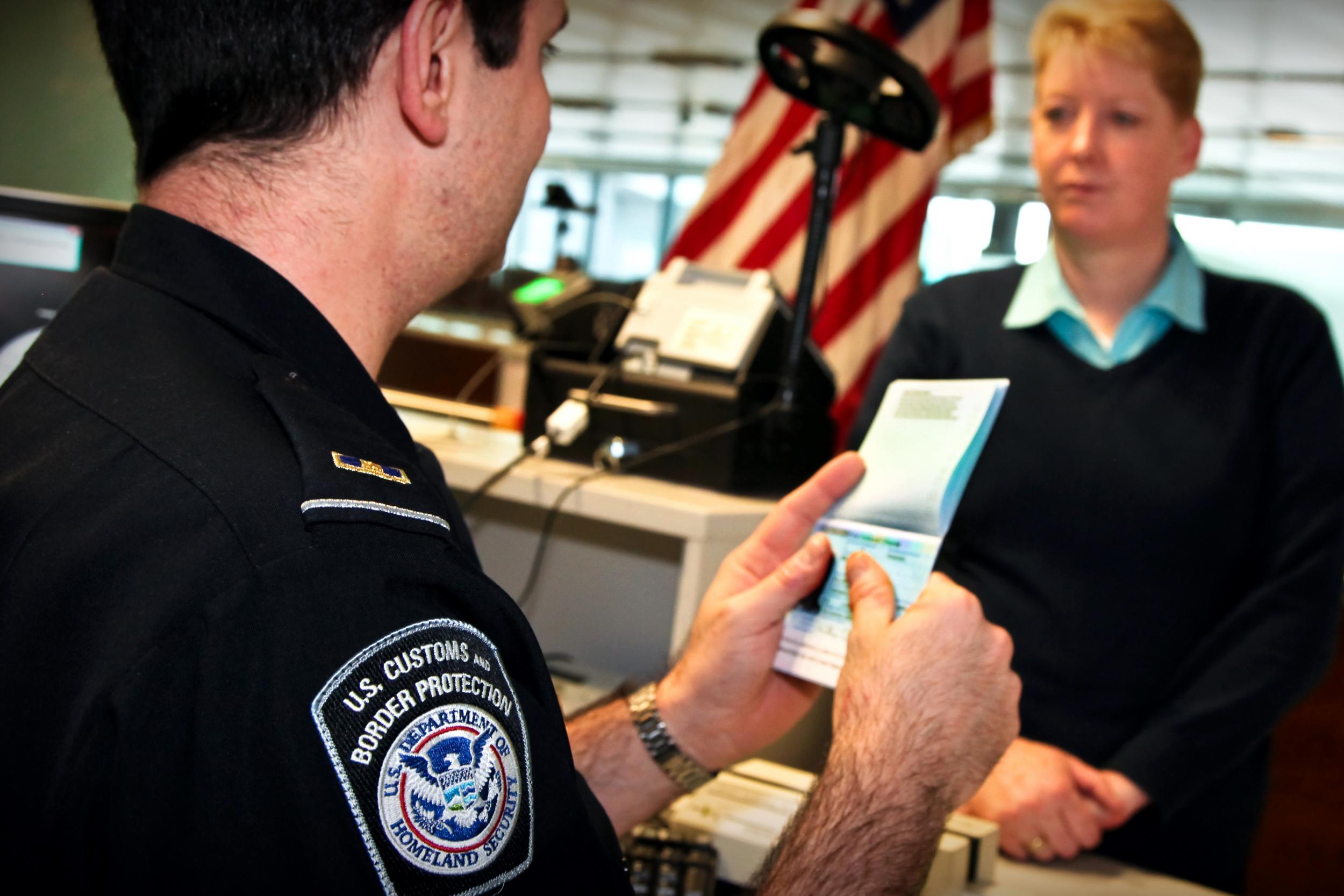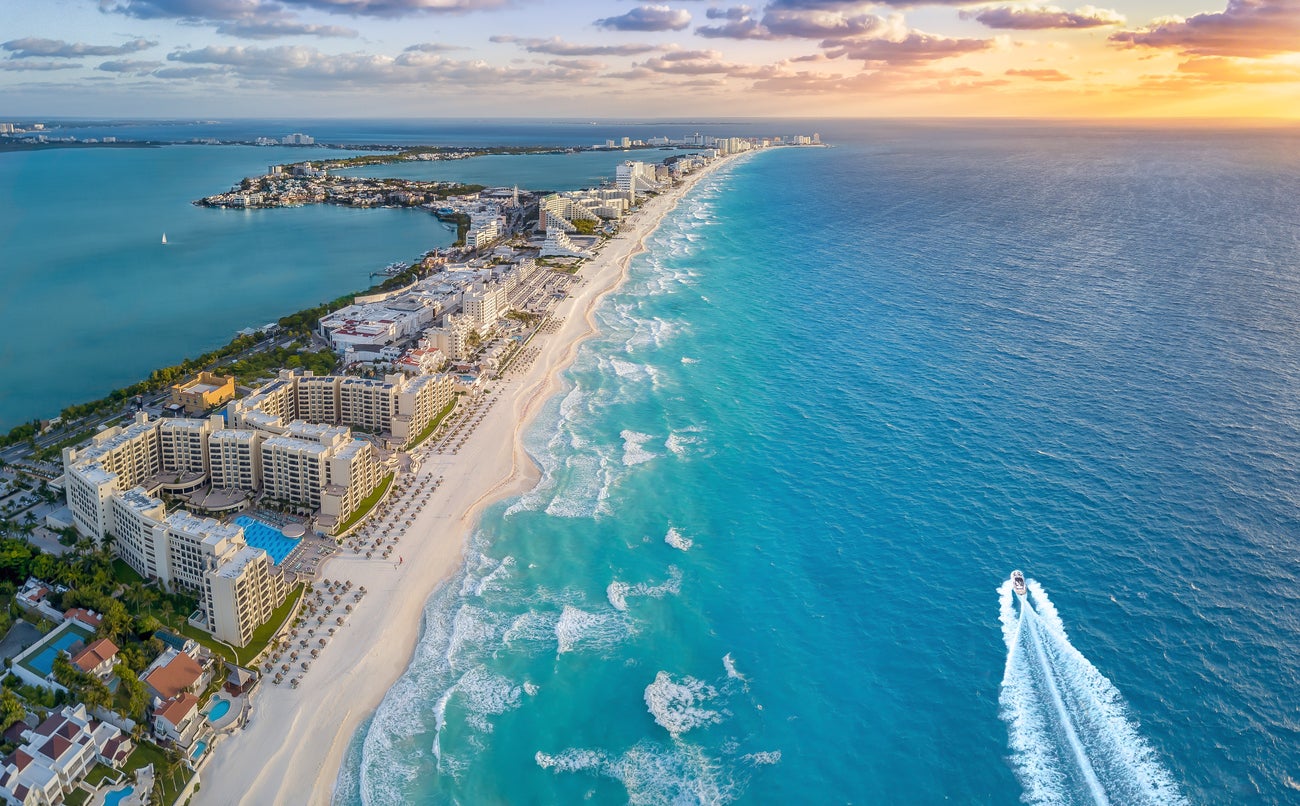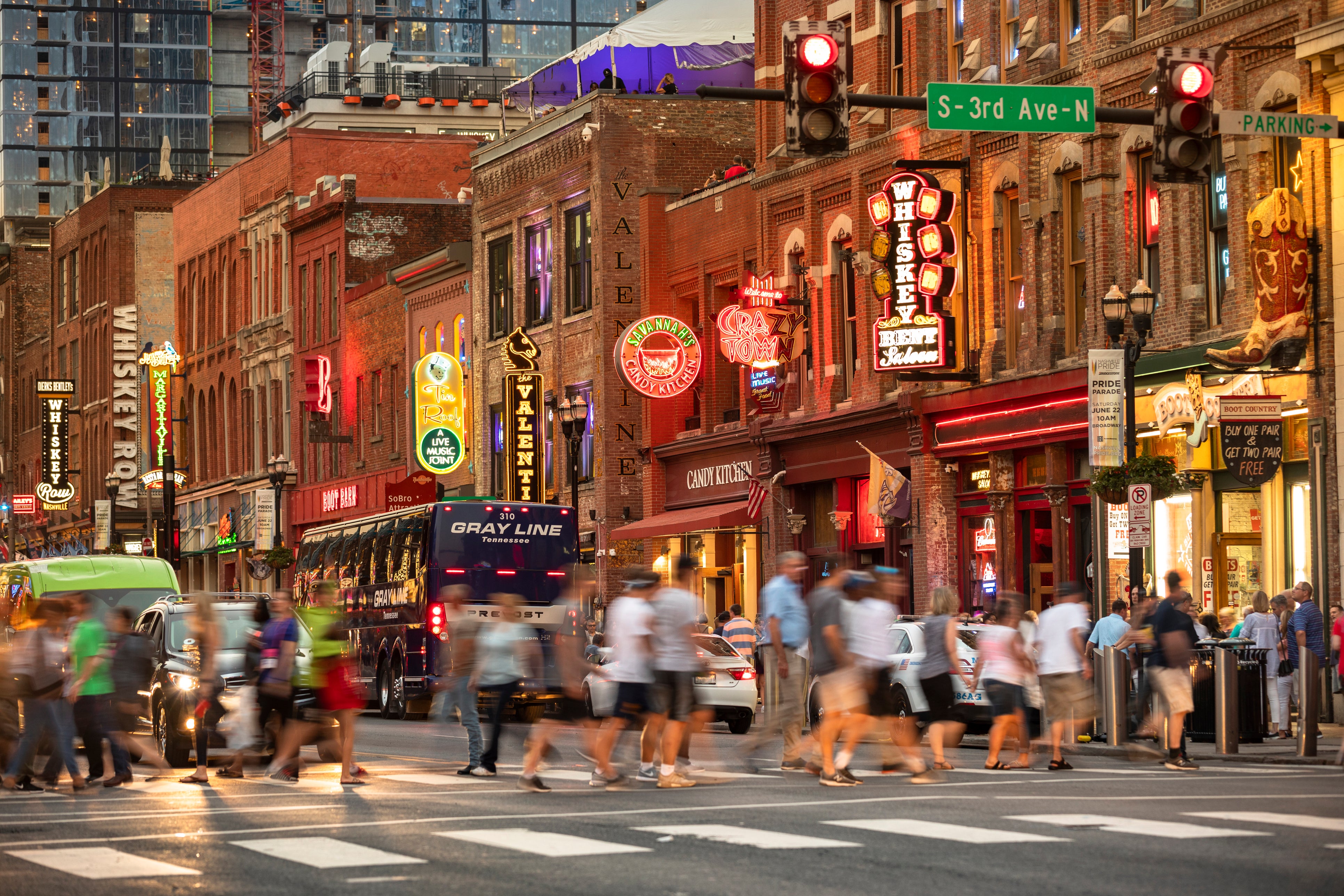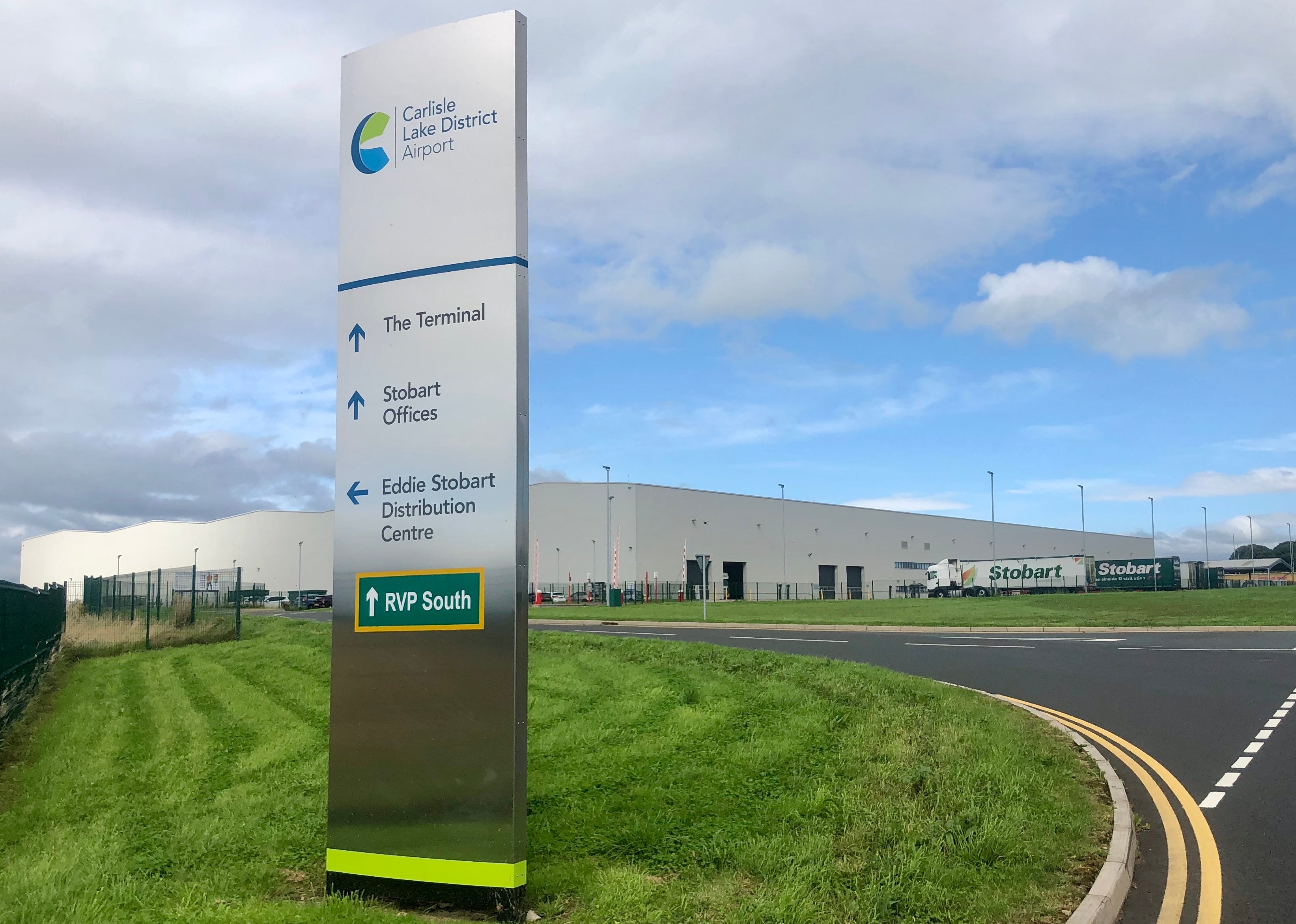Why don’t UK airports take a leaf out of Ireland’s book?
Simon Calder answers your questions on airport preclearance, spending Christmas in Cancun, and how to book a two-stop trip to America


Q I read your article on preclearance through US formalities and Edinburgh airport’s plans to adopt it. Why has no UK airport taken up the concept before now? And if Edinburgh does it, will there be a rush from other airports to follow?
Philip B
A Preclearance is a marvel. Anyone who has had the misfortune to arrive at a busy US airport on the third plane to touch down from Europe in quick succession will confirm that Customs and Border Protection (CBP) formalities can take an age. Two hours is not unusual at the height of summer.
Preclearance is where the immigration and customs checks are moved to the departure airport. It allows you to be scrutinised by CBP officials before your transatlantic flight. Dublin and Shannon airports in Ireland have had the system in place for many years. Once you pass through the CBP checkpoint into the secure departures area, you are effectively on US soil while still at the Irish airport.
On arrival at your American destination, you are treated as a domestic passenger. Either you can head straight into town, or board your connecting flight with none of the stress associated with tight connections when you have to go through border formalities after touching down.
The process for launching preclearance is extremely involved, requiring a new law to allow US officials to be installed at UK airports. It is also a huge investment in space. With Heathrow, Gatwick and Manchester – the three biggest UK airports – so constrained, it is not immediately clear where the secure area might be located. In addition, a parallel system called Global Entry greatly accelerates US formalities on arrival for frequent travellers who enlist. The view is that these high-spending passengers may not need the preclearance service.
Yet just as Dublin now attracts people like me who want to benefit from preclearance, Edinburgh could do the same – at which point other airports are likely to race to catch up in cutting down on red tape.

Q I’m hoping to take family from London to Cancun for Christmas this year for a once-in-a-lifetime treat. There will be six of us in total travelling. But the price of the flights at the moment is scary: direct flights in economy are more than £1,400 return each, which makes the total well over £8,400 for flights alone. My dilemma is threefold at the moment. Do I book the flights now? Do I wait and book them in the autumn? Or do I forget the whole idea and start looking for another once-in-a-lifetime family holiday? Realistically, what are the chances of those costs coming down?
Kiernan C
A An indication of how much fares are rising, particularly for transatlantic flights, is that my first reaction was: actually, £1,400 return isn’t bad, for outbound on Saturday 21 December and returning two weeks later. If those are your dates, I urge you to grab them now – assuming that your credit card can bear the impact, and you have cancellation insurance in place. In fact, I suggest you spend even more: book a proper package (for example with British Airways Holidays or Virgin Holidays) to get some decent value on accommodation, too.
For the airline industry, aircraft availability is a huge problem – though one that comes with benefits for them, notably very high fares as supply fails to keep up with demand. Many aircraft were retired during the Covid pandemic, and Boeing is behind with deliveries. So the prospect of new flights being added to the schedule are slim.
You could, though, try to keep a lid on costs with indirect flights. Routing via the US is a pain, not least because you must enrol for an Esta and go through Customs and Border Protection even when connecting on international flights. It also magnifies the chances of things going awry on the journey. But TAP Portugal also offers flights via Lisbon, and for a family saving of more than £1,000, you might consider it worthwhile.

Q Are there such things as multi-flight trips these days? I’m thinking of going to see friends in Nashville and New Orleans. I would fly from London to Nashville on 10 April, continuing to New Orleans on 16 April for five days before flying home. But I am not sure how best to travel. Should I get a return from London to Nashville with internal flights to New Orleans and back? Or two single tickets with an internal flight, or even driving from Nashville to New Orleans?
Shari R
A A flight itinerary that goes London-Nashville-New Orleans-London is perfectly feasible using a range of airlines and their alliances – particularly British Airways with American Airlines and Virgin Atlantic with Delta. One deal on Skyscanner for your dates costs around £800. This starts with BA non-stop from Heathrow to Nashville, and American Airlines from there onwards to New Orleans (via Dallas) and onwards to London Heathrow (via Charlotte). That is a reasonable fare.
However, the almost five-hour journey in the middle, routing from Tennessee to Louisiana via Texas, would double the direct distance and be tedious (Dallas-Fort Worth airport has no redeeming features). Also, it will be much more pleasant to enjoy British Airways nonstops each way. So I suggest you buy an “open-jaw” ticket on BA: out to Nashville on 10 April, back from New Orleans on 21 April. British Airways is selling the trip for £655, which personally I would grab right now. This fare is hand-baggage only but since BA allows two pieces weighing a total of 23kg each you need not pay extra for checked baggage.
With the transatlantic journey solved, you can now decide how to bridge the gap between these two great cities more pleasurably than a detour via Texas. By air, the superb Southwest Airlines will fly you from Nashville to New Orleans on the morning, afternoon or evening of 16 April for a fare of $125 (£98). Sorting all the flights for your trip for around £750 is excellent value these days. In your position, though, I would take the Greyhound bus from Nashville to Memphis, ideally for at least a night, and then get up early to catch the Amtrak train down the Mississippi to New Orleans. The total fare will be about the same as the plane, but it will be a more memorable journey.

Q You have been covering the bid to reopen Doncaster Sheffield airport. Do you think there is any chance that Carlisle airport will come back to life? It was a really handy route across the Irish Sea for people in Cumbria and the Borders.
Name supplied
A Carlisle Lake District Airport is actually operating, but not for scheduled passenger flights. Starting in July 2019, Loganair ran flights to Belfast City, Dublin and London Southend from Carlisle. The short-lived route network from the airport ended abruptly in late March 2020 when Covid struck. It is difficult to see any commercial flights returning due to the sparse catchment area. Carlisle itself has a population of only 110,000; Newcastle, across the Pennines, has three times as many citizens – as well as a reasonably flourishing airport with flights to a wide range of destinations.
That airport is only 46 miles away from Carlisle and about an hour’s drive. Therefore many people from Cumbria and the Borders will head east – or, perhaps more likely, south to Manchester. This is Britain’s third-busiest airport, with direct trains from Carlisle taking just over two hours to the station close to the terminals. What about people from southern Scotland, in towns such as Annan and Dumfries? They could instead travel to Prestwick airport, which itself is struggling to survive.
So much for outbound travel; every airport likes to have a good balance of inbound passengers, too. The addition of “Lake District” should have some appeal for prospective visitors (only a churlish person would point out that the boundary of the Lake District National Park is about half an hour’s drive away). But from Belfast and Dublin, the vast majority of traffic was, I understand, people with family connections rather than tourists.
Whether Carlisle has a future for passengers depends on technology, I believe. If low-cost, low-impact small passenger planes become commonplace in a couple of decades, it may well be that airports like Carlisle could appeal to companies setting up dense networks. But for now, I am afraid that other airports – or ferry ports such as Cairnryan or Liverpool – provide the best way to cross the Irish Sea from Carlisle.
Email your question to s@hols.tv or tweet @simoncalder
Join our commenting forum
Join thought-provoking conversations, follow other Independent readers and see their replies
Comments
Bookmark popover
Removed from bookmarks